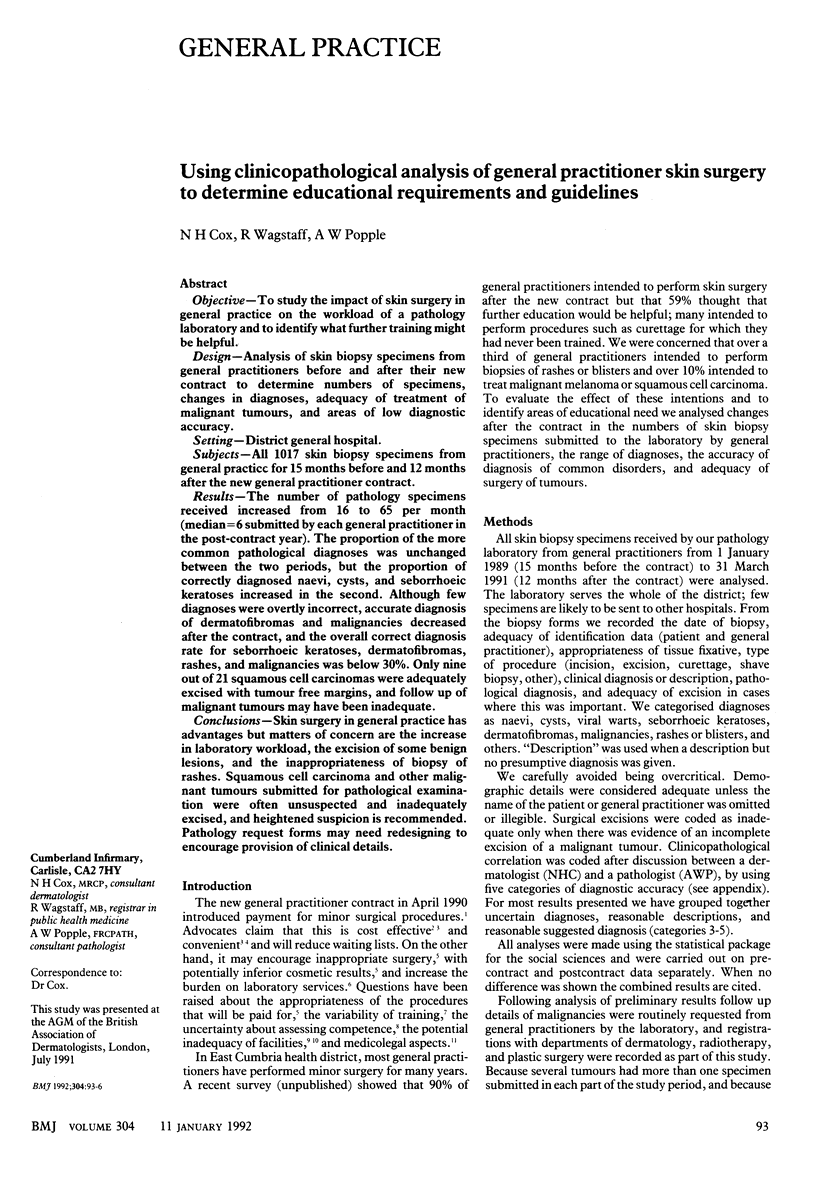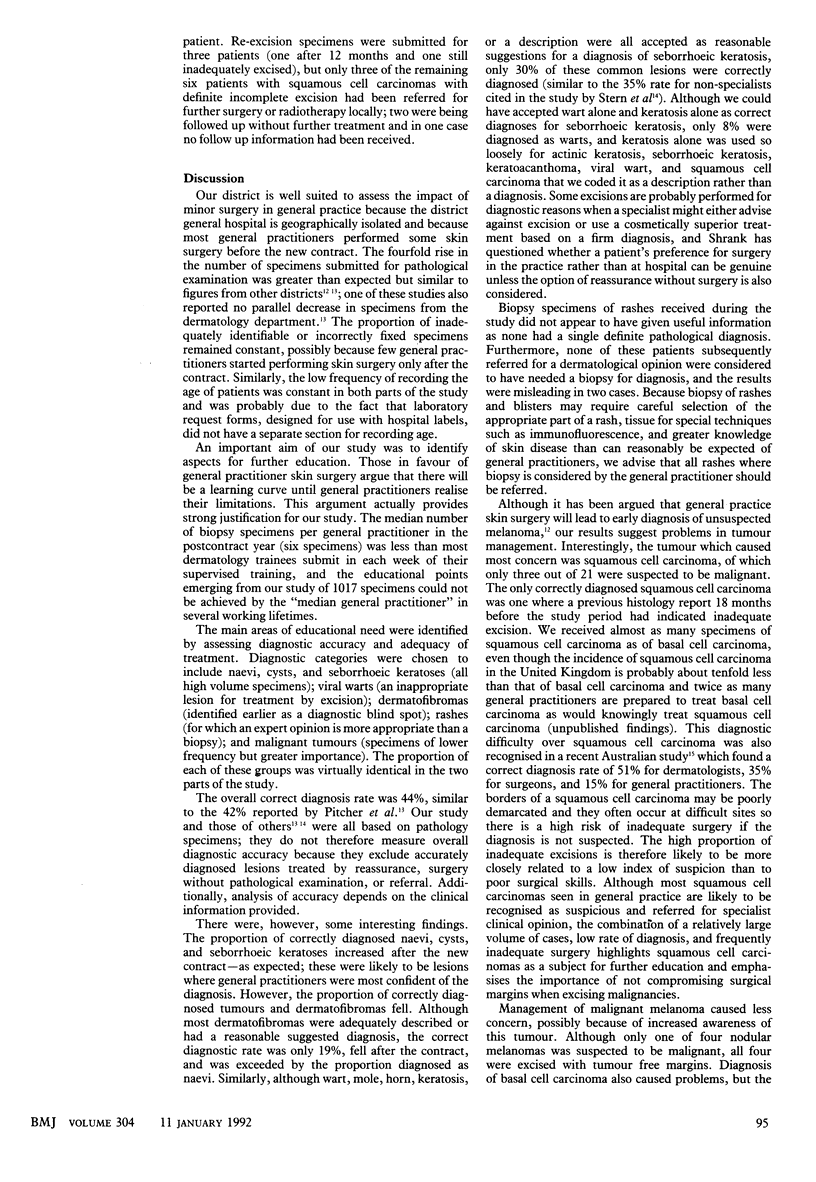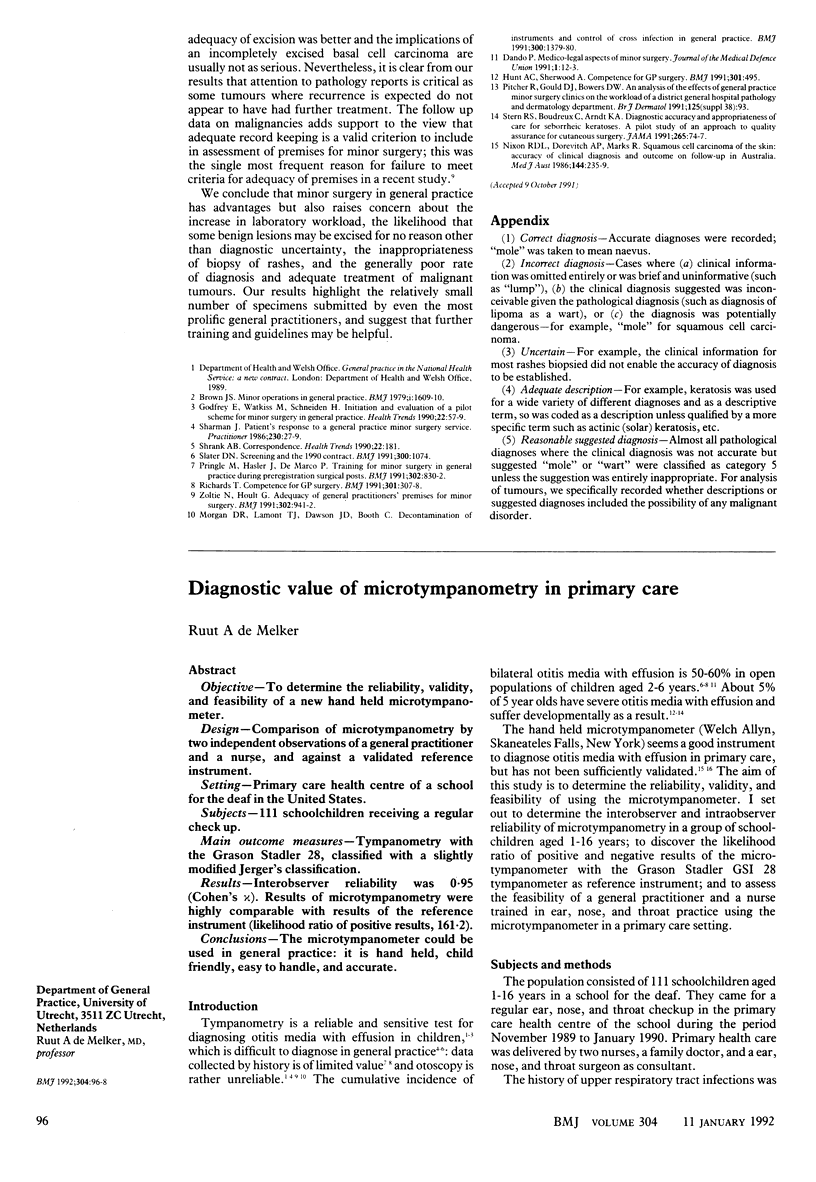Abstract
OBJECTIVE--To study the impact of skin surgery in general practice on the workload of a pathology laboratory and to identify what further training might be helpful. DESIGN--Analysis of skin biopsy specimens from general practitioners before and after their new contract to determine numbers of specimens, changes in diagnoses, adequacy of treatment of malignant tumours, and areas of low diagnostic accuracy. SETTING--District general hospital. SUBJECTS--All 1017 skin biopsy specimens from general practice for 15 months before and 12 months after the new general practitioner contract. RESULTS--The number of pathology specimens received increased from 16 to 65 per month (median = 6 submitted by each general practitioner in the post-contract year). The proportion of the more common pathological diagnoses was unchanged between the two periods, but the proportion of correctly diagnosed naevi, cysts, and seborrhoeic keratoses increased in the second. Although few diagnoses were overtly incorrect, accurate diagnosis of dermatofibromas and malignancies decreased after the contract, and the overall correct diagnosis rate for seborrhoeic keratoses, dermatofibromas, rashes, and malignancies was below 30%. Only nine out of 21 squamous cell carcinomas were adequately excised with tumour free margins, and follow up of malignant tumours may have been inadequate. CONCLUSIONS--Skin surgery in general practice has advantages but matters of concern are the increase in laboratory workload, the excision of some benign lesions, and the inappropriateness of biopsy of rashes. Squamous cell carcinoma and other malignant tumours submitted for pathological examination were often unsuspected and inadequately excised, and heightened suspicion is recommended. Pathology request forms may need redesigning to encourage provision of clinical details.
Full text
PDF



Selected References
These references are in PubMed. This may not be the complete list of references from this article.
- Brown J. S. Minor operations in general practice. Br Med J. 1979 Jun 16;1(6178):1609–1610. doi: 10.1136/bmj.1.6178.1609. [DOI] [PMC free article] [PubMed] [Google Scholar]
- Godfrey E., Watkiss M., Schnieden H. Initiation and evaluation of a pilot scheme for minor surgery in general practice. Health Trends. 1990;22(2):57–59. [PubMed] [Google Scholar]
- Morgan D. R., Lamont T. J., Dawson J. D., Booth C. Decontamination of instruments and control of cross infection in general practice. BMJ. 1990 May 26;300(6736):1379–1380. doi: 10.1136/bmj.300.6736.1379. [DOI] [PMC free article] [PubMed] [Google Scholar]
- Nixon R. L., Dorevitch A. P., Marks R. Squamous cell carcinoma of the skin. Accuracy of clinical diagnosis and outcome of follow-up in Australia. Med J Aust. 1986 Mar 3;144(5):235–239. [PubMed] [Google Scholar]
- Pringle M., Hasler J., De Marco P. Training for minor surgery in general practice during preregistration surgical posts. BMJ. 1991 Apr 6;302(6780):830–832. doi: 10.1136/bmj.302.6780.830. [DOI] [PMC free article] [PubMed] [Google Scholar]
- Sharman J. Patient's response to a general practice minor surgery service. Practitioner. 1986 Jan;230(1411):27–29. [PubMed] [Google Scholar]
- Slater D. Screening and the 1990 contract. BMJ. 1990 Apr 21;300(6731):1074–1074. doi: 10.1136/bmj.300.6731.1074. [DOI] [PMC free article] [PubMed] [Google Scholar]
- Stern R. S., Boudreaux C., Arndt K. A. Diagnostic accuracy and appropriateness of care for seborrheic keratoses. A pilot study of an approach to quality assurance for cutaneous surgery. JAMA. 1991 Jan 2;265(1):74–77. [PubMed] [Google Scholar]
- Zoltie N., Hoult G. Adequacy of general practitioners' premises for minor surgery. BMJ. 1991 Apr 20;302(6782):941–942. doi: 10.1136/bmj.302.6782.941. [DOI] [PMC free article] [PubMed] [Google Scholar]


